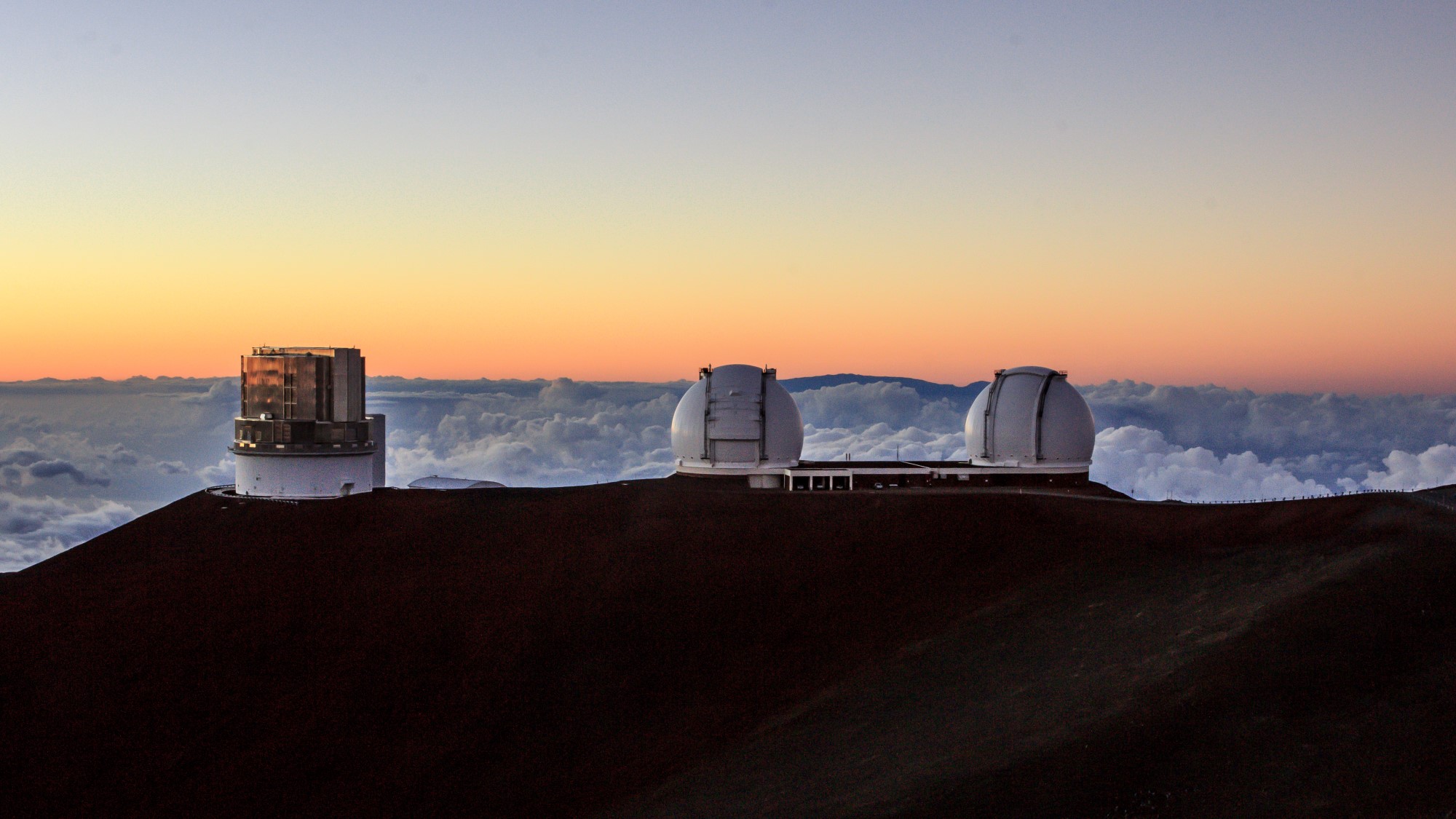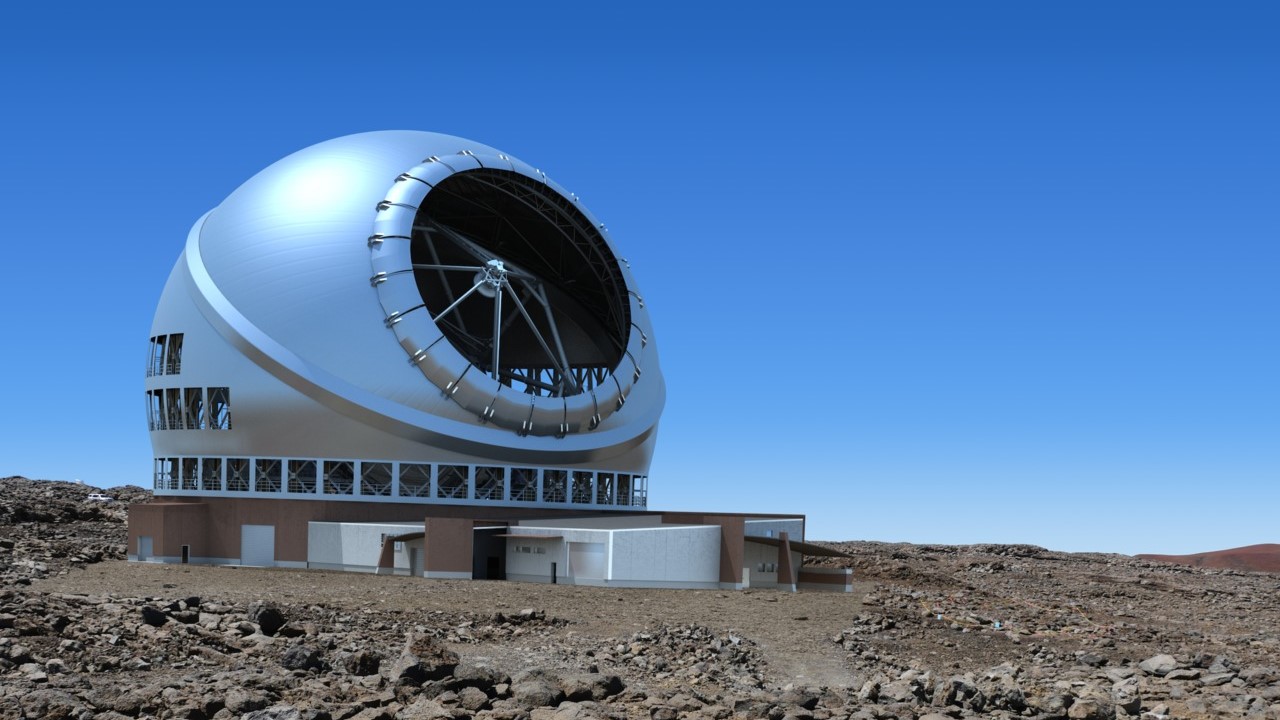This new authority will decide the fate of astronomy atop Hawaii's contested Maunakea volcano

After years of conflict, a Hawaiian mountain that's home to some of the most important astronomical observatories on Earth finds itself at peace.
Among the famed telescopes already perched atop Maunakea are the two telescopes of the Keck Observatory and the northern outpost of the Gemini Telescope, and astronomers dream of adding the Thirty Meter Telescope (TMT) to that collection. But some Native Hawaiians have been opposing astronomers' grasp on the mountain, which they consider sacred, for decades.
"We in Hawaii had fallen into this deep polarization and we felt stuck," Rich Matsuda, associate director for external relations at Keck Observatory, said during a plenary panel on Jan. 9 at the 241st meeting of the American Astronomical Society held in Seattle and online.
Now, Hawaii has formed a new agency that will oversee all activity on the mountain, or mauna, beginning in 2028 — the Maunakea Stewardship and Oversight Authority (MKSOA). Matsuda and two other members of the authority introduced the astronomy community to the MKSOA during the plenary panel, sharing how the authority came to be and what they hope it achieves — and outlining an approach astronomers might want to mimic at other observatory sites.
Related: The Thirty Meter Telescope: How a volcano in Hawaii became a battleground for astronomy
MKSOA faces a daunting challenge. In 2028, the organization will take over managing the mountain; five years later, the state's 65-year lease of the summit to the University of Hawaii for astronomy will run out. (The university issues subleases to the individual observatories.)
"At the end of five years, we are to take full responsibility for managing of the mountain including developing a master plan, including deciding how astronomy fits on on the mauna," John Komeiji, chair of MKSOA, said during the panel. The short timeline will be a challenge, he noted, adding that the authority doesn't yet have any employees and can't access the $14 million allocated to the effort.
Get the Space.com Newsletter
Breaking space news, the latest updates on rocket launches, skywatching events and more!
"There has not been one person who hasn't called me crazy," said Komeiji, who left a job as general counsel for Kamehameha Schools, a private school system that emphasizes Hawaiian culture, to lead the authority.
The roots of contention
Astronomers first came to Maunakea in 1964 with a small dome meant to help scientists evaluate the site. At the time, the state of Hawaii was just five years old and developing at a breakneck pace, Noe Noe Wong-Wilson, an MKSOA member and the executive director of the Lālākea Foundation culture nonprofit, said during the panel.
It was a challenging time for Native Hawaiians, she said. "While there was some discussion that no one in the community opposed that, I don't believe that was so much the case," she said. "I think our community was generally overwhelmed with all of the new technology, all of the new infrastructure that was being placed into our small community."
In the beginning, there were only a few telescopes, but then more and more observatories staked out territory on the mountain. Native Hawaiians who opposed the developments began registering their objections with the state but felt government was ignoring their voices, Wong-Wilson said.
"This is the probably the most divisive issue that has come for all of Hawaii, in my lifetime, Komeiji said of Maunakea. "There are people in your midst whose family doesn't talk to them anymore, just because of this issue."

The tension came to a head in the 2010s, when Native Hawaiians on several occasions blocked access to the summit in protest of the proposed Thirty Meter Telescope (TMT), a massive new observatory that proponents hope could be four times more powerful than the James Webb Space Telescope. By July 2019, opposition to the TMT had crystallized, and Native Hawaiians began what would become a months-long encampment on the mountain that seemed like it might continue indefinitely.
"We were wondering, well, how are we going to end this — we didn't want to live up there forever, it's not a place where humans should be living," Wong-Wilson said. "We might still be there except that COVID came into our community." Leaders sent everyone home to reduce the risk of spreading the virus, and disagreements over the mountain's fate — like so much else — were shelved.
Testing a different approach
A new chapter opened when the Hawaiian legislature stepped in and in July 2021 established the working group that would eventually recommend the creation of the MKSOA, which was formally established in July 2022. Many working group members joined the new authority, continuing their work building relationships and setting a new tone for conversations about Maunakea.
"What we realized is, the thing that we had all in common together was we deeply cared about Maunakea from our different perspectives," Matsuda said.
Wong-Wilson, who was one of several elders arrested in 2019 for blocking the road to the summit and served on the working group before joining the authority, said she has come to terms with the need to compromise when it comes to the fate of Maunakea. "I did not want to leave that conundrum to my children and grandchildren, as it has been for generations before me," she said.
Now comes MKSOA itself, which is testing a new model for determining what does or doesn't happen on the mountain — a model that gives a voice to each community that feels strongly about the mountain.
"This feeling of mutual stewardship is a lot different than a stakeholder model, when you come in to protect your interest and transact and negotiate to get your piece of the pie," said Matsuda, who also served on the working group.
"The process, and the manner in which we deal with the next chapter, is almost as important as whatever that next chapter is," Komeiji said. "Do we become red and blue and just yell at each other and scream at each other, as much of the rest of the world, the United States, is becoming, or can we find a Hawaii way?"
Although the authority's purview will stretch far beyond astronomy, and although astronomy's footprint on the mountain includes much more than the proposed TMT site, resolving the conflict surrounding the massive observatory may be the task that makes or breaks MKSOA.
For now, TMT is focused on manufacturing equipment that could be used either at Maunakea or at the project's back-up site in the Canary Islands off the coast of Northwest Africa; the organization is also wooing the U.S. National Science Foundation and other potential funding sources. But sooner or later, construction will need to begin at one site or the other, just as the dozen observatories already on Maunakea will need to know their fates before their leases run out in 2033.
And MKSOA is aware that people will be keenly watching how their work plays out. Hawaii and the United States more generally are both beginning, in fits and starts, to reckon with the violence colonialism and its aftermath have wrought. Within astronomy, the Astro2020 report, which is meant to guide U.S. astronomy for the next decade, discussed Maunakea in detail and explicitly called for astronomy to embrace a community-based science model at observatory sites around the globe.
"This is not happening in a vacuum, it's happening in a bigger framework of change," Matsuda said. "I think for us in the astronomy industry, it's important that we pay attention to this and we look for opportunities to change and we try to be in the vanguard of this change so that we can thrive in the future."
Email Meghan Bartels at mbartels@space.com or follow her on Twitter @meghanbartels. Follow us on Twitter @Spacedotcom and on Facebook.
Join our Space Forums to keep talking space on the latest missions, night sky and more! And if you have a news tip, correction or comment, let us know at: community@space.com.

Meghan is a senior writer at Space.com and has more than five years' experience as a science journalist based in New York City. She joined Space.com in July 2018, with previous writing published in outlets including Newsweek and Audubon. Meghan earned an MA in science journalism from New York University and a BA in classics from Georgetown University, and in her free time she enjoys reading and visiting museums. Follow her on Twitter at @meghanbartels.









